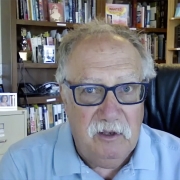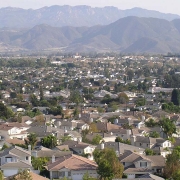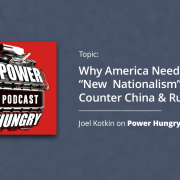The Battle for Cities
America’s cities face an existential crisis that threatens their future status as centers of culture, politics, and the economy. Many urban advocates continue to delude themselves that U.S. cities are about to experience a massive post-pandemic return to “normal.” But the disruptive technological, demographic, and social changes of recent times are more likely to upend the old geographic hierarchy than to revive it.
A representative New York Times article from July 12 denied that the pandemic has impacted dense urban areas in particular, and blamed negative attitudes toward cities instead on what it called “alluring” anti-urban attitudes. Perhaps urban advocates need to ditch their own attitudes and confront reality (and the statistical evidence): Many key problems facing our core cities—growing social instability, rising crime, out-migration, increasingly radicalized politics, high costs, and tight regulation—predate the pandemic, and are not likely to go away easily. Clever proselytizing by urban media likely won’t be enough to convince Americans liberated by the efficacy of remote work to eventually return.
To survive and thrive, American cities need to reinvent urbanity by returning to a more diverse economy concentrated not in the central districts but in neighborhoods stretched across the city. Such a shift can only take place if the trajectory of urban politics changes. Some cities, notes Seth Barron, author of the newly published The Last Days of New York, have been captured by “an equity oriented social ideology” paid for by real estate interests and public sector unions, and backed by mainstream media and nonprofits, that has proven profoundly self-destructive. Outside New York, political leadership in cities like Portland, Oregon; Minneapolis; Seattle; and San Francisco continue to work assiduously to restrain law enforcement, even in the face of rising crime.
There appears to be a growing pushback against the progressive urban agenda, whose journalistic promoters often minimize social disorder. Defunding the police has not turned out to be a progressive success; the five cities that reduced their police budgets the most in 2020—Austin, Texas; New York; Minneapolis; Seattle; and Denver—have seen murders spike over the past year, well above the national average. Having partially gone down the path of defunding in 2020, New York, Baltimore, and Oakland, California, have now taken steps to restore some police funding. In ultraliberal San Francisco, the vast majority of city residents want more police; almost half are considering leaving the city, citing social disorder as a key reason. Residents of the fashionable Capitol Hill area in Seattle are erecting barriers to keep out the homeless.
But if the urban gentry are upset, the real shift is further down the social pecking order. The surprising victory of ex-cop Eric Adams as New York’s next mayor took place amid a surge in violent crime, garnering support for his centrist, pro-police platform from the city’s minority voters. My colleague Charles Blain, president of the Urban Reform and Urban Reform Institute in Houston, noted that opposition to “defunding” has come primarily from African American and Latino politicos in his city, while support seems to stem mostly from affluent white liberals.
Political divides within cities increasingly defy traditional definitions of right and left. There’s a growing conflict between those largely dependent on public schools, spaces, and transit, and those free of the need for public services due to their ability to live close to work, send their kids to private schools, or choose not to have kids at all. Much of the base of urban radicalism has shifted from minority communities to the ultrawoke, largely white, educated left.
Yet progressives, due in part to small voter turnouts, still dominate representative bodies like the New York City Council; the newly elected Manhattan district attorney follows the left’s program of low-intensity crime enforcement. In Buffalo and Pittsburgh, recent elections have favored far-left candidates. In Philadelphia, a recent attempt to remove the George Soros-backed District Attorney Larry Krassner failed miserably, despite rising crime.
The current urban trajectory is downwind of demographics. Despite the media hurrahs of a massive “back to the city” movement, Americans have been moving in the opposite direction for most of the past decade. Since 2012, suburbs and exurbs have accounted for about 90% of all metropolitan growth. The rate of growth in America’s biggest and most expensive cities began to decline as early as 2015, and the population shift to suburbs, exurbs, and smaller cities has accelerated, something evident well before the pandemic.
Read the rest of this piece at Tablet Magazine.
Joel Kotkin is the author of The Coming of Neo-Feudalism: A Warning to the Global Middle Class. He is the Presidential Fellow in Urban Futures at Chapman University and Executive Director for Urban Reform Institute. Learn more at joelkotkin.com and follow him on Twitter @joelkotkin.
Photo: JJ, via Flickr under CC BY-NC-ND 2.0 License.









 Gage Skidmore, CC 2.0 License
Gage Skidmore, CC 2.0 License